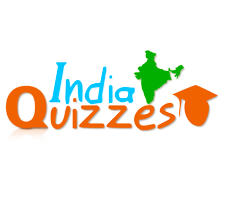Question: Plants that grow in saline water are called
1. halophytes
2. hydrophytes
3. mesophytes
4. xerophytes
Answer: 1
Question: Plants synthesise protein from
1. starch
2. sugar
3. amino acids
4. fatty acids
Answer: 3
Question: O2 released in the process of photosynthesis comes from
1. CO2
2. Water
3. Sogar
4. Pyruvic
Answer: 2
Question: Number of chromosones in Down’s syndrome is
1. 46
2. 47
3. 48
4. 49
Answer: 2
Question: Long bones function in
1. support
2. support,erythrocyte and leucocyte synthesis
3. support and erythrocyte synthesis
4. erythrocyte formation
Answer: 2
Question: Lock jaw, that is, difficulty in opening the mouth is a sympton of
1. plague
2. tetanus
3. cholera
4. none of these
Answer: 2
Question: Lion is kept under in Etolian pyramid as
1. Producer
2. Primary Consumer
3. Secondary Consumer
4. Tertiary Consumer
Answer: 3
Question: Lichen is considered to be a symbiotic association of two living organisms. Which organisms are involved in it?
1. algae and bacteria
2. algae and fungi
3. algae and bryophytes
4. fungi and bryophytes
Answer: 2
Question: Leukemia is a disease of the
1. lungs
2. blood
3. skin
4. nerves
Answer: 2
Question: Kwashiorkar and beri beri are
1. communicable diseases
2. infectious diseases
3. deficiency diseases
4. none of these
Answer: 3
Question: If a freshwater plant is put in sea water, its cell will
1. undergo plasmolysis
2. lyse
3. swell with turgor pressure
4. all of the above
Answer: 1
Question: If we are measure the length of blood vessels in our body, how many kilometers would it add up to?
1. 10 km
2. 1000 km
3. 96,000 km
4. 10,000 km
Answer: 3
Question: Human urine as compared to human blood is
1. hypotonic
2. hypertonic
3. isotonic
4. all of these
Answer: 2
Question: Human blood contains________ percentage of plasma
1. 35%
2. 40%
3. 50%
4. 65%
Answer: 4
Question: How many bones are there in a newly born infant?
1. 206
2. 230
3. 280
4. 300
Answer: 4
Question: Heightened emotion is caused by the
1. pituitary glands
2. thyroid glands
3. adrenal glands
4. salivary glands
Answer: 3
Question: Heart attack is caused due to
1. blood sugar
2. cholesterol
3. blood urea
4. blood protein
Answer: 2
Question: Glucose is mainly absorbed in
1. P.C.T
2. D.C.T
3. Henle’s loop
4. Nephron
Answer: 1
Question: Ginger and Sweet potato are
1. homologous
2. stem and roots respectively
3. analogous
4. both (b) and (c)
Answer: 4
Question: Genetics is the branch of science that deals with the study of
1. relations between plants and the environment
2. inheritance and variation
3. cell structure
4. thermal structure
Answer: 4
Question: Gene control
1. proteins synthesis but not heredity
2. protein synthesis and heredity
3. heredity but not protein synthesis
4. biochemical reaction of some enzymes
Answer: 2
Question: Gene is
1. a segment of DNA
2. a segment of DNA and histone
3. a segment of DNA , RNA and histone
4. all of the above
Answer: 1
Question: Fungi are always
1. autotrophic
2. hetrotrophic
3. parasitic
4. saprophytic
Answer: 2
Question: Fruiting body of mushrooms is present in
1. Fungi
2. Algae
3. Like monocotyledon seeds
4. Like Dicotyledon seed
Answer: 1
Question: From which part of the plant is turmeric obtained?
1. root
2. fruit
3. seed
4. stem
Answer: 4
Question: Food is normally digested in the
1. liver
2. stomach
3. small intestine
4. large intestine
Answer: 3
Question: Fish respire through their
1. nose
2. lungs
3. fins
4. gills
Answer: 4
Question: Fertilization is the process of
1. Fusion of male nucleus with polar nuclei
2. formation of seed from ovule
3. fusion of one male gamete with the egg
4. transfer of pollen from anther to stigma
Answer: 4
Question: Fertilization in frogs is
1. external
2. internal
3. both external and internal
4. aerial
Answer: 1
Question: The chemical name of vitamin c is
1. citric acid
2. ascorbic acid
3. oxalic acid
4. nitric acid
Answer: 2

Select Page

